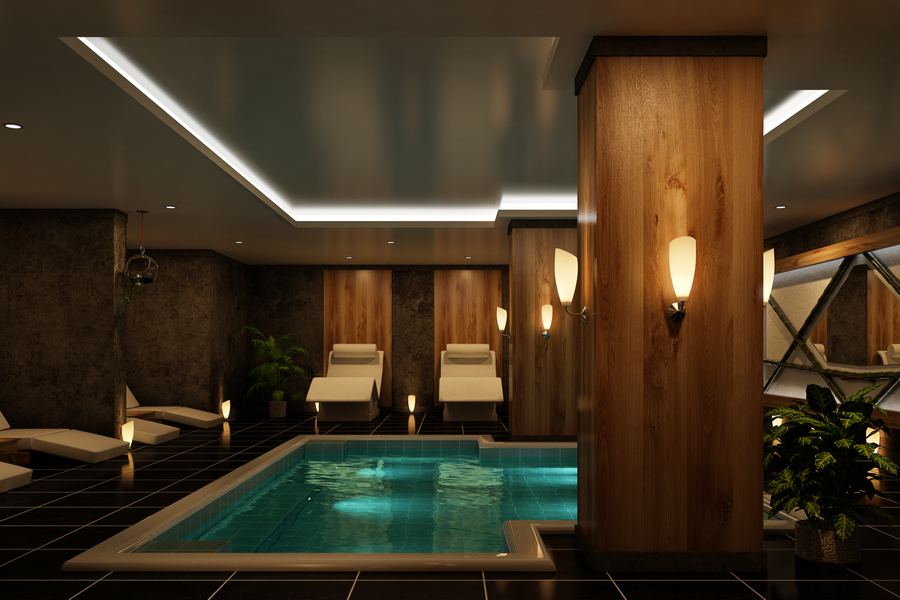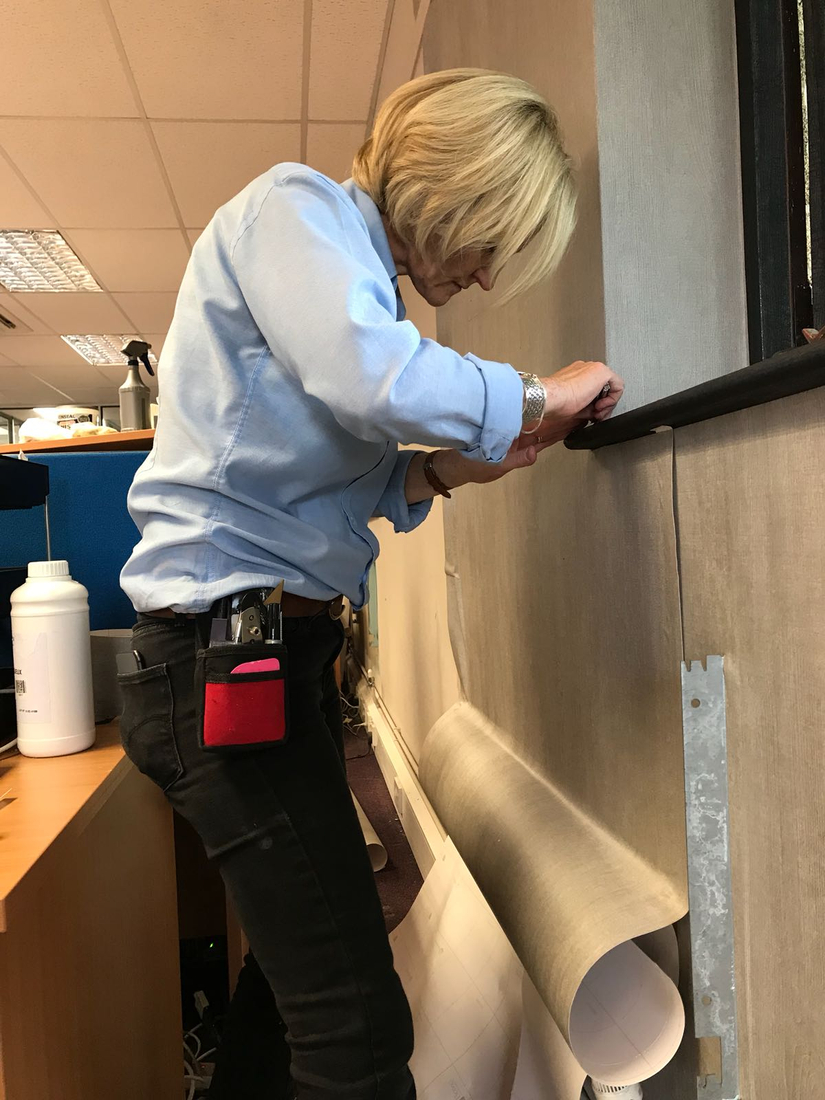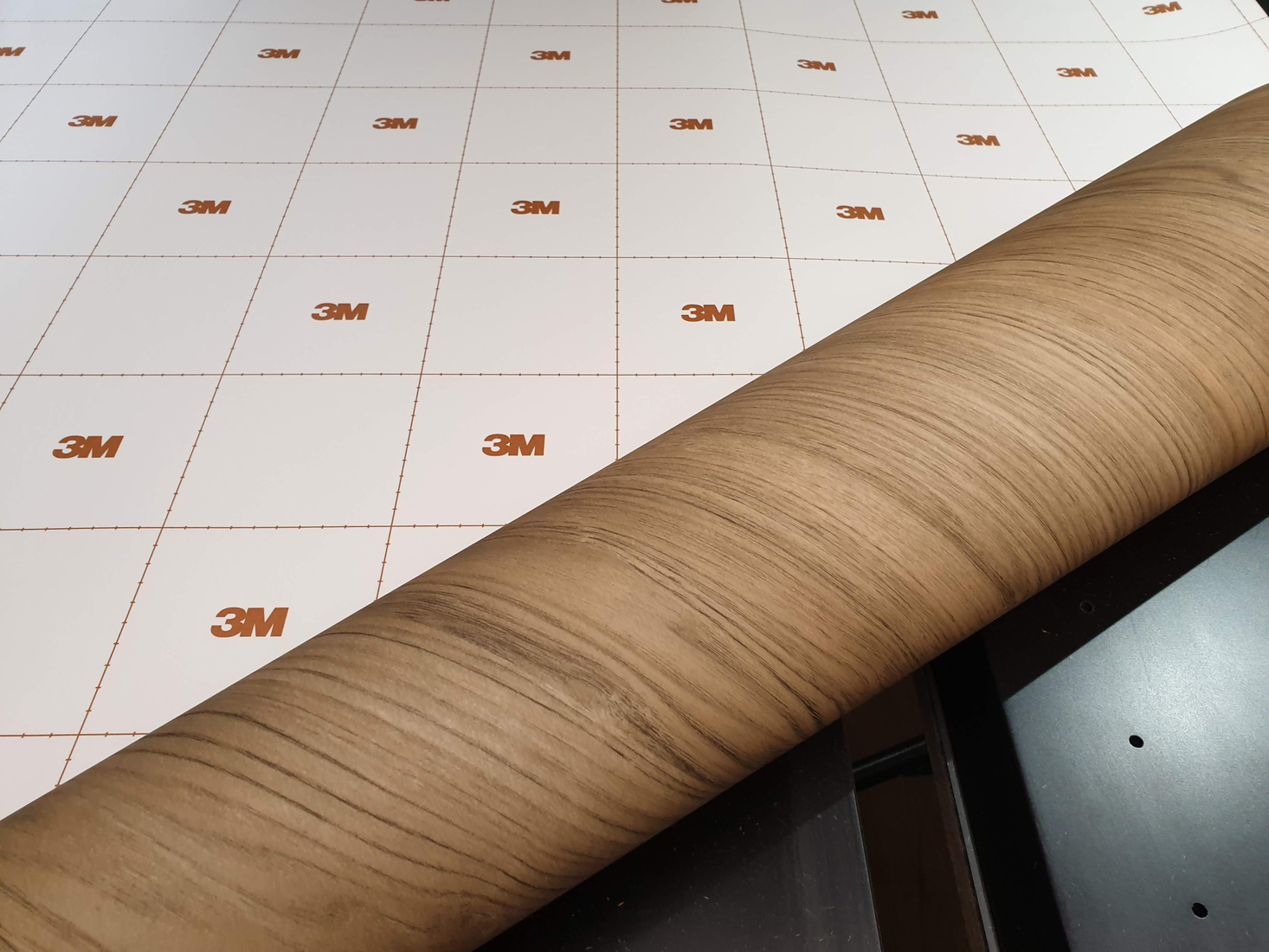Inspiration
Be inspired by learning about new ways in which you can support and drive your business forward by keeping up to date with the latest news and blogs from William Smith.

The growth of architectural films has been phenomenal in the last few years, with more and more people choosing to refurb with film, rather than replace. Yet, one of the most common questions we get asked is how much is it? Anyone who is familiar with architectural film knows that it’s not a simple question to answer. Firstly there are hundreds of finishes available, all with different price points, but also it’s more complex than just the material cost alone.
There are several other factors that can influence the final cost involved, so we wanted to produce a short reference guide for any installers to help to build the bigger picture and help answer the million-dollar question!
For anyone who is not au fait with wrapping. It’s a simple process, whereby an existing surface, flat or 3D, is covered with a self-adhesive film. Similarly to vehicle wrapping, architectural finishes are highly engineered, durable, premium films, that are designed to look and feel like real life materials. The films are applied with heat, by skilled installers, to provide a realistic hardwearing finish. Once the film is applied to a surface, you can create bespoke designs using cheaper materials and wrap them to look like the real deal.
The utilisation of vinyl wrapping is a rapidly growing strategy within the retail and hospitality sectors, for interior and exterior decoration, as well as full refurbishment projects that have yielded 60% cost savings for multiple hotels across many well-known brands such as; M&S, Burger King, Holland and Barrett, Hilton, Radisson Blu, Holiday Inn, Marriott, Club Med, Novotel, Sofitel and more. With most common applications being doors, headboards, reception desks and tables, architectural films offer the opportunity to renovate existing FF&E, case goods or wall coverings in hundreds of faux finishes including wood, colour, stone, marble, leather, metallic, fabric, glitter and more!
Once you have identified an opportunity for using architectural film, where do you start working out how to price the job? It’s worth beginning by setting customer expectations. You can’t do everything with a 220 micron film. Everything has its limitations, but architectural finishes can still be a premium and durable solution for many projects, as discussed in our previous blog; how to win projects with film looking at changing perceptions of architectural film.
Architectural finishes may not necessarily be the cheapest option in terms of the material price, especially when you also factor in the installation costs. But the real savings may be more apparent when you factor in the savings versus buying new fixtures and fittings, and the wider benefits of upcycling what’s already there. For example, brand new solid wood or marble materials are expensive, meaning the cost of wrapping an existing surface may be similar or even cheaper than replacing with new. If you then consider the total lifetime costs, architectural film is typically seven times cheaper than other methods.
In addition to that, once you factor in the extra benefit of minimal disruption during a refurb, and the lower maintenance over the lifetime of film, it can be an even greater saving that you first think. Businesses don’t have to close during the install, therefore there’s less disruption, which means more importantly, no loss of revenue. Veneers, laminates and natural stones usually require application off site with specialist tools and machinery. In contrast, films can be installed in situ, with minimal equipment – a heat gun and a squeegee and you’re ready to go.
The significant advantage with an architectural film, is that it’s a unique product. The design possibilities are vast and you can achieve a premium finish that you can’t get with anything else. With some of the new ultra matt or metallic finishes, you really can create bespoke design features that would be difficult to emulate with natural materials. Think about corners and edges. Using a film, you can wrap in around these in one continuous piece in order to achieve a high-end look, without any of the untidy edge seals or banding you would need with a more well-known laminate or veneer, meaning it can look even more genuine.
While film compares with many architectural elements, it ticks all the boxes and has many benefits over other surface finishes. Once applied to a surface, it also offers a degree of cushioning to resist any impacts and damage, in contrast to a harder surface that may crack upon impact. However, the beauty of architectural film, is that any damage over its lifetime can be repaired with an invisible patch, without having to remove or replace any expensive panels.
Its abrasion resistance is superior to many common wall surfaces such as paint and wallpaper, with a similar level to a laminate. There are additional specialist ranges also available for high traffic areas, or where greater protection is sought. The AR range have an additional protective topcoat layer for horizontal areas such as bar tops, or on hospital doors that get numerous knocks and wear and tear.
Plus, architectural films are made from durable PVC, meaning they are wipeable and practical. Hygiene is more important than ever right now, so a product that can be easily cleaned and is trusted in healthcare and medical environments is also testament to its credibility.
When pricing for an architectural film project, it is also worth remembering to factor in a contingency for any hidden costs. Some of the more obvious costs to consider include time to survey, travel and quotation preparation. Look out for any areas that may need longer to clean and prep. Are any specialist tools required to remove any elements prior to wrapping?
It is also important to measure accurately to calculate the material quantities needed. Remember to think about the film orientation, in particular for wood grains or metallic, where the direction is important for the end result. Consider roll sizes and calculate measurements allowing for waste and application errors, around +10%. If you have surplus material leftover from any previous projects, don’t forget you can always use any offcuts to produce your own applied sample pieces to help win the next project too.

It’s not just the material cost in any project, think about what else you offer. Customers don’t just buy the cheapest solution, and in fact often you get what you pay for. It’s important to highlight any additional skills, services and added values that you and your brand represent, which will help you to win projects. If you have been on one of our training courses, then shout about it. People place trust in companies who have invested in application training, and we would always refer leads to skilled installers, in order to ensure application standards are maintained.
When deciding what material brand to use, what’s important to your customers? Sometimes trying to strip out costs by using a cheaper brand, may not be the best decision. Understandably, budgets may sometimes be restrictive, but understanding what your customer needs can help to select the right film for the right project.
Some finishes are unique to a particular material brand; therefore, this may also be a consideration for the project. Finishes that are exclusive may command a higher price due to the extra features they present e.g. abrasion resistant or non-PVC ranges. Durability also varies between brand and pattern. Metallic finishes may not be as conformable and won’t be as durable as a solid colour film, then you also need to consider cast products are going to last longer than a calendered film. For any exterior applications, the specialist exterior range is expected to last 10 years+ ensuring protection against defects in fading, peeling, discoloration or loss of adhesion.
What else can you offer? Could you include a maintenance package as part of your project quote? What services do you offer? Break down everything in your quote, to maximise the chance of winning the project.
There are several stakeholders within a project, and understanding what budget is available from the outset will help to present your best offer within these parameters. Quite often any design project involves architects, designers, as well as building owners, all of which will have differences in opinion.
Often, other trades or subcontractors may also be working on site throughout a refurb project, which may mean you face delays while you wait for access or for conditions to be suitable. Factor in additional time to allow for this. It may sound obvious, but you can’t apply architectural film in a dusty or dirty environment. Communication is important to ensuring a smooth-running project and keeping everyone happy.
Keep an eye out for other potential complications such as access restrictions, parking or skip requirements, as well as other logistical issues. These can also mean costs can spiral out of control, and before you know it, a project is not as profitable as you first thought.
Underestimating preparation time is another risk factor. Things like primers need time to dry before application, and surface preparation can often take more time than anticipated. Factor these timings into your budget, to make sure you’re not out of pocket. Use non-skilled workers to carry out the prep work, while skilled trained applicators can concentrate on the complex areas of the install. Often this is one of the biggest mistakes when pricing architectural films.
Finally, once you have come up with a project strategy and apportioned costs accordingly, the last stage is to present your proposal in person. This gives you the opportunity to explain each section of the overall price and reaffirm your service offering. Use photos from previous applications and case studies to provide credibility and showcase your brand. What can you offer over and above your competitors? Free samples, maintenance packages or finance packages are all extras you can include to win the order.
Architectural film can be another budget option for designers when costs are being squeezed, allowing businesses to refresh a room, reception, bar, shop, restaurant more often or on budget. However, you can see there’s more to the method than meets the eye. Refurbs with film are not always the cheapest solution, but they should be presented in terms of their overall benefit as a viable value engineering proposition. As a more sustainable option or way to give existing areas a new lease of life, without the usual disruption or cost.

For even more useful tips and support, you can join our A Team and be part of the fastest growing installation network for architectural films. The Architextural brand exists to drive awareness of the opportunities with all designers, architects, building owners and end users to create more potential projects for our installers. We also stock the largest range of films within the UK, with both 3M DI-NOC and Cover Styl ranges available by the metre.
You can read our previous blog on tips around driving demand using the marketing mix for more inspiration. We are here to support you with samples, resources, training and more. If you’d like to learn more about this topic, we run courses relating to how to sell architectural finishes, please contact us for further info… Let’s get winning more projects with film, together.